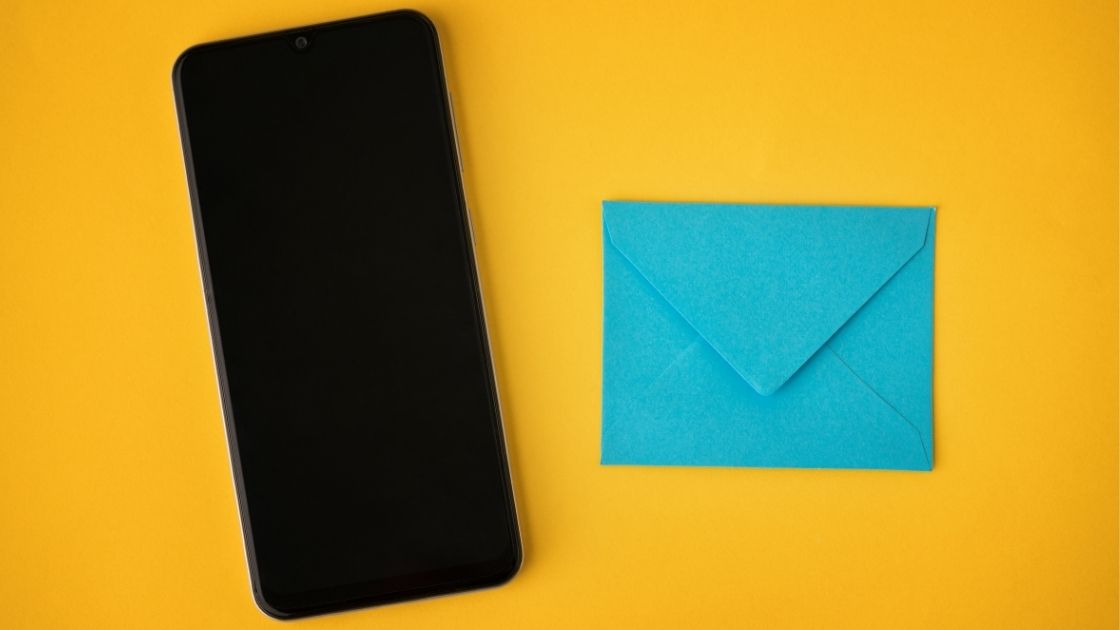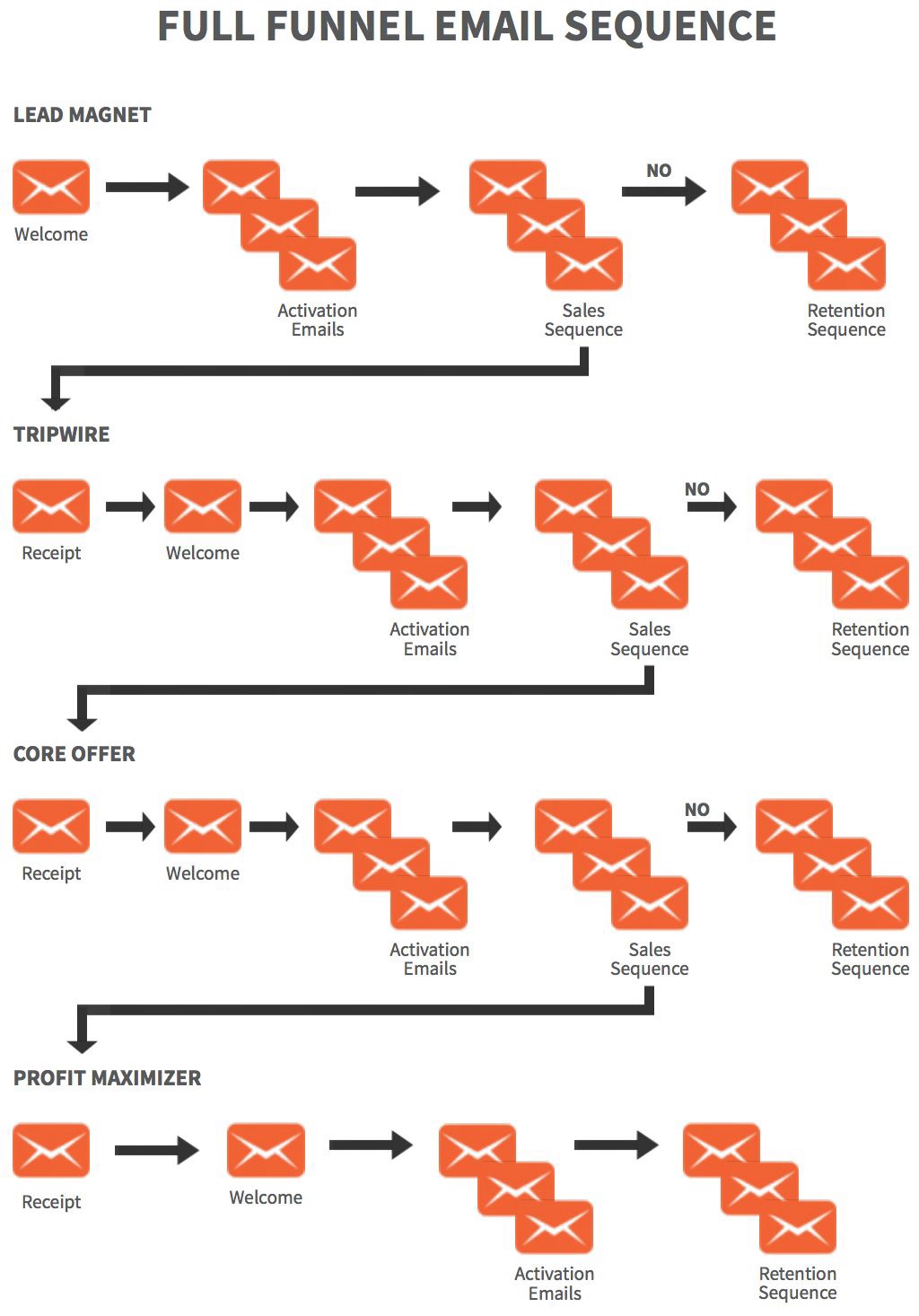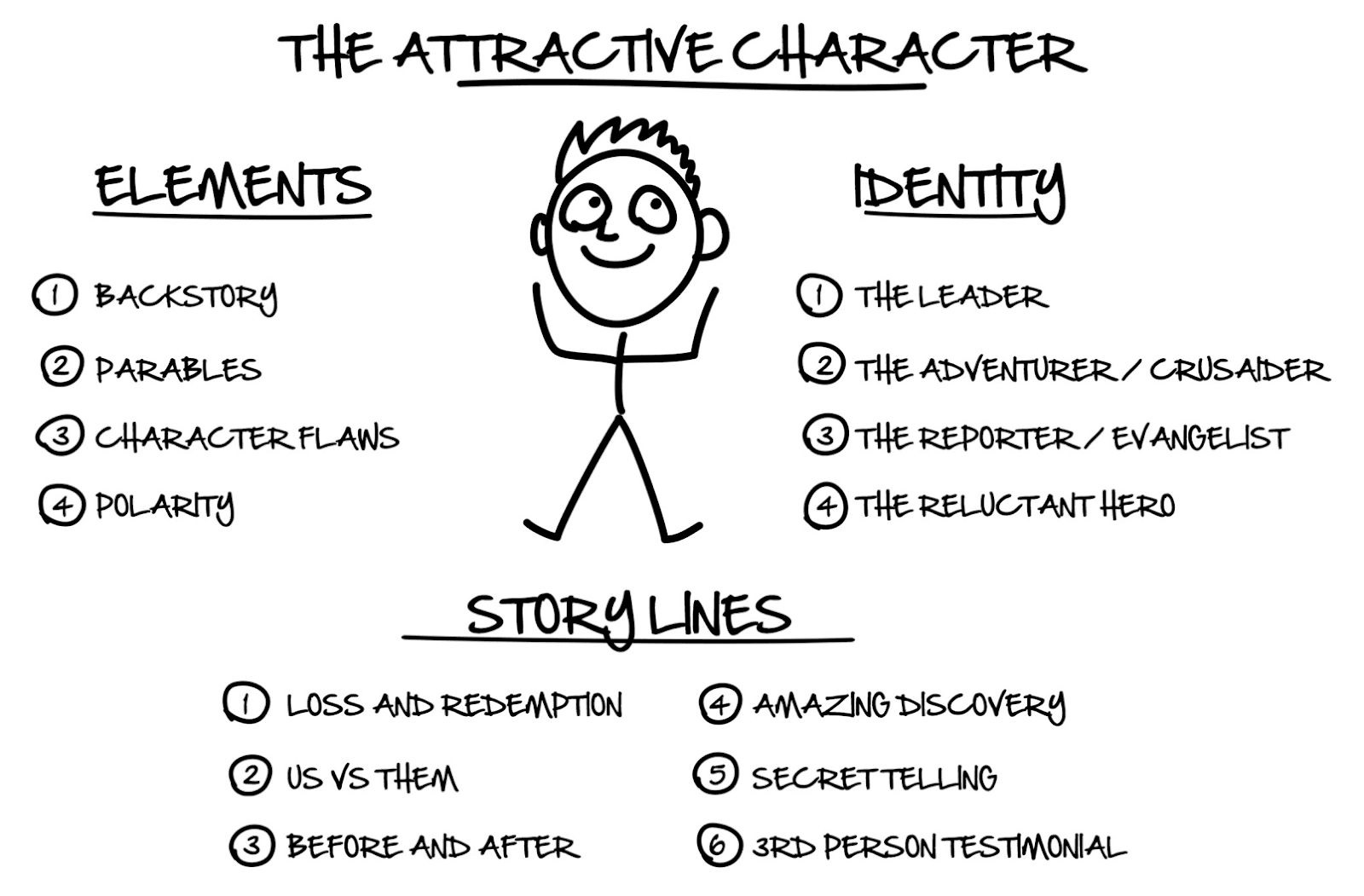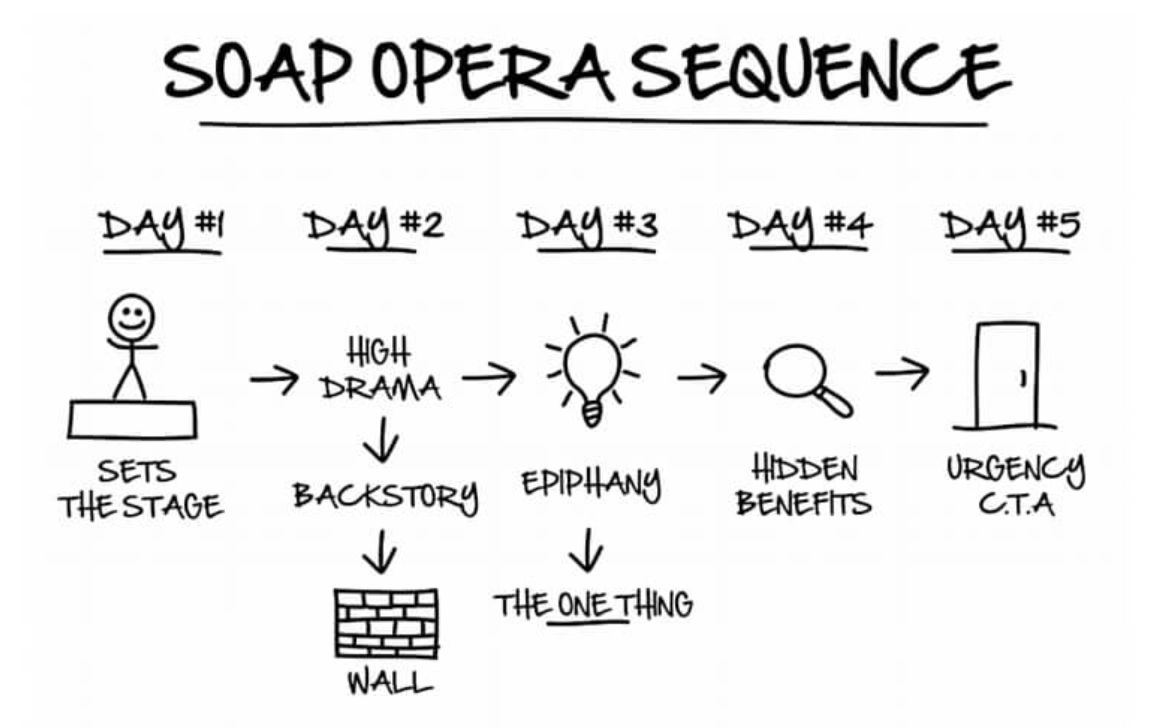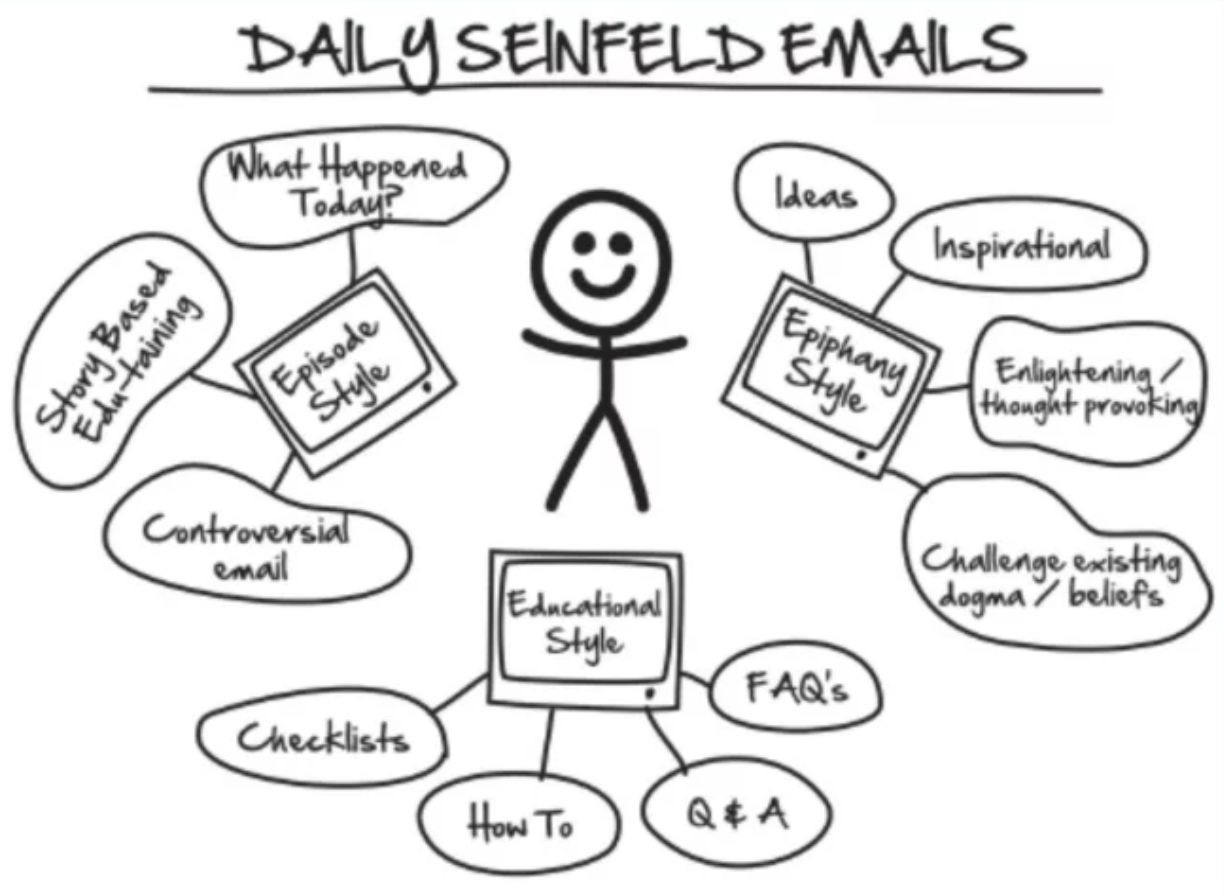The first point to make: EMAIL MARKETING IS NOT DEAD!
Just because it’s one of the oldest marketing channels, people may say that it’s outdated and doesn’t work… trust us when we say it is alive and well! As long as you do it in the right way.
Email marketing should be one of the key factors within the marketing strategy and sales funnel. This is the channel where you can
effectively build one-on-one relationships with potential users to build trust and build the relationship.
An inbox is somebody’s personal space. If you can get into their inbox and be respected through the value and connection you are about to learn, then you’ll set yourself up to make it a lucrative channel.
What is Email Marketing Automation?
Using Email marketing automation technology, you can send out automatic emails to the right recipients at the right time, all without having to do any work yourself.
With the help of your email marketing platform, you can target customers based on their history, interests, and purchase history.
Your automated campaigns will be more relevant to your target audience because they will be tailored for each user.
Why is email marketing so powerful?
Let’s say you send cold traffic to your sales page and they convert (buy) at a 2% conversion rate which is considered an amazing sales page performance.
Send 1000 people to the page and you get 20 sales! Amazing.
But… Because you sent them to just an offer page, you are losing 98% of visitors. That’s 980 people that you might never see ever again! You’d then have to invest in getting another 1000 people the next day, week, or month, in the hope that they will buy from you again.
Now…If you send that person to a landing page with a lead magnet that converts at 40% (40% is considered a good lead magnet conversion rate) then that means you have 400 emails where you can continuously get in touch with them over and over again.
Because those email signups are now more familiar with your brand, your offer, and services, and because they’ve already committed to you, if you send them to that same 2% converting sales page, they are actually more likely to convert because they are qualified warm leads!
So… they will likely convert at double the rate of the cold traffic. So in this case, 4%.
The results… If you send those 400 email signups to the 4% converting sales page you’ll get 16 sales. Yes, 16 is less than 20…
But… You now have 386 email addresses who you can continuously send sales offers whenever you want. And, because it takes people on average 7 points of contact before they buy… over time, and after 7+ valuable emails you’ll send them… they will convert!
Repeat this for every 1000 visitors you get, and the results are far beyond what cold traffic to a sales page would get you.
You should use the above figures and work in the price of your product to see if you can project potential revenue based on some conversion rates.
Does that number look good? This is the power of the funnel in action.
As you might imagine, email marketing is an advanced marketing tactic, such is the power of it, but we’re going to simplify it for you so you are automating & scaling your sales funnel and income.
In summary, you’ll need to create:
1) Set Up Automation
2) Welcome Automation
3) Engagement Automation
4) Cart Abandonment Automation
That might not be news to most of you, but it’s the details of what makes each of those campaigns that are key to you increasing your revenues.
Email Service Providers
The basic starting point if you’re new to this… You need a place to host, manage, create and send all of your emails and contacts.
When those leads that you are collecting from your lead magnet and landing pages sign up… they’ll bounce straight into your email service provider (ESP) which triggers the above automation that you’ll set up.
There are a number of providers to choose from. Each has different features and pricing. Some have better segmentation, some have a better design editor and templates, etc, and some will have different price points and send limits.
So see what works for you based on the size of your list, how much you want to segment and design etc.
- MailChimp
- Active Campaign
- Campaign Monitor
- Constant Contact
- SendinBlue
- Drip
- HubSpot
- ConvertKit
- AWeber
if you are just getting started. Drip.com is pretty awesome for e-commerce businesses but more expensive than the other options. If you are a bigger business, with sales teams and need an advanced and sophisticated CRM and email provider you could use Infusionsoft.
So if you don’t have an email service provider already, go and sign up to ActiveCampaign or Mailchimp to get started.
1) Set Up Automations
When a visitor becomes a lead, you need to send them into a list, and then add them (automatically) to an email drip sequence.
A drip sequence can be called an ‘automation’ or ‘autoresponder’ too, so you’ll see different terminology for those things.
Essentially, these automatons are pre-written emails, usually 3-7 emails long, and set up to send out to a contact at certain intervals every couple of days.
Once the contact has finished the automation, they will move to another automation or general newsletter list or something.
To keep with the Sales Funnel, you can set up automation for each stage of the funnel that the contact signs up for.
So, if they sign up for the Lead Magnet, you can put them into a ‘Lead Magnet Automation’
Here’s a diagram on how your email sequence could look:
The aim of the emails as we have mentioned is to build rapport, trust, and credibility so that they eventually feel comfortable to purchase from you.
Email Automation goals
1. Capitalize on the initial excitement and connection from when the contact signed up to your offer by building rapport
2. Continue Momentum to push them into other offers in your funnel
3. Engage with them and satisfy them with value to build a strong and long term relationship
4. Prime them for future marketing messages and products
5. Sell them those new offers
Story Telling
You’re already thinking, “so many emails, what the f*%k do I write?!”
A good framework to use throughout your whole email strategy is a storytelling one. You’ll remember how we stressed that people connect with stories.
It’s a powerful sales tool and you’ll find that your best-performing emails will be the ones where you use storytelling as a method for selling.
You put all those threads together, and you have yourself an ongoing story that you can share with your contacts.
Each email can be a story with an inserted lesson or insight that follows on from the last email and opens the loop up for the next email.
This can be a ‘string of pearls’ methodology (a string of valuable pearls together on a thread), a ‘Soap’ or ‘Seinfeld’ sequence, where you create an episode around your daily life with snippets of value that lead into the next email.
Tell your story using the ideas below
Using the above framework allows us to tell people what you are doing and why. What inspired you? Where the passion come from? What kind of person are you?
Your family and kids? What do you love? What do you dislike? What’s your skillset? What’s your mission?
This will help build a relationship with the customers and build the picture. This is part of the sales funnel and works like marriage…
you don’t ask a person to commit to you after the first meeting, you get to know each other over a couple of meetings. You learn a little bit more about each other to build the connection.
Then you feel comfortable committing. The onboarding cycle is exactly the same.
In the upcoming steps, we’ll give you the automation you need to set up and where you’ll insert your storytelling emails.
2) Welcome Automation
A useful and effective framework to use to create your welcome/activation automation is the SOAP opera sequence. This would be sent when a contact signs up for a lead magnet.
It’s called a soap sequence because it’s meant to give the new contact a story, with your character, your challenges, your drama, and your hooks that lead from one email to the next as we pointed out previously.
Here’s how it would usually look.
So this is where you are building a connection with your customer. You’re not really hard selling them, but you might put a call to action to an offer on the last day of the sequence.
You don’t have to stick to this exact SOAP framework. It’s just a method you can use to make it easier to get up and running. As we keep saying, you’d measure the open rates, click-through rates, and conversion rates of each email that you send and test new emails to use based on your results.
But this can be a good place to get started quickly and easily with a framework that is proven.
Other welcome automation can include:
Email 1: Send them the product
Deliver their lead magnet and say thank you. Keep it brief, short, and sweet. All they need right now is what they asked for.
Email 2: Welcome Email
The next day, say hello and introduce yourself to your prospect. Give the contact the opportunity to get to know you. This would send as soon as your contact opts-in to your email list.
Send them the link to your lead magnet in case they didn’t receive it the day before too.
Email 3: Benefit Email
Rather than giving them an email day after day (like the soap sequence above) you might want to respect their inbox space and send your second email a couple of days later.
You can reiterate their pain points and offer your product or service as a solution.
Email 4: Education and Additional Benefits
Give it another 3 or 4 days to again respect their inbox and privacy and to avoid potentially crossing the ‘annoying’ line, and send the contact an email with additional info on your product.
You can use similar sales copy to what you have on your sales page and have them click through to the sales page with a big call to action.
Email 5: Engage with them on their opinions
After that harder sell in the last email, you might want to wait a week to fire off the 4th email where you can invite your contact to answer some questions.
It’s a sales technique to turn this into a 2-way conversation and activate them in the dialogue. Asking them questions like “Do you agree” or “What are your obstacles?”, “Have they tried XYZ?” etc.
If you can get the contact to agree with you and give you a ‘yes’ as they read, they are more inclined to move closer to a sale.
Email 6: Offer
You’ve pitched your product a few times by now so before you leave them alone, dangle a final carrot of the sequence to try and convert them.
You can send them an offer or discount on your product with a countdown to add scarcity. If they don’t convert it’s time to then send them into that unconverted list where you can start sending them ‘Seinfeld’ type emails to keep them engaged, but without the sales pitches.
3) Re-Engagement and Activation Automation
By now, you’ve introduced yourself, given them a soft and hard sales pitch, so if they haven’t yet converted you want to segment them into another sequence where you can send them weekly updates, newsletters, tips, stories, how-to articles, etc.
You’ll keep your brand in front of them and continue to give them value without them feeling like they are getting pitched all the time.
Russell Brunson again uses a framework called the Seinfeld sequence, using the infamous TV show as an example of the type of emails you can send to continuously engage and retain your contacts.
As an example, you could send an email to your contact telling them about a lesson you learned today, and how one of you “increased your FB sales by using this ad copy” etc.
Or share with them an idea you have for a new marketing tactic or workout plan (depending on what your business is) to inspire them in their own lives.
The more emotion you can share with them, the bigger the connection they will have to your brand.
Engagement Tips
Retention and engagement emails help to bring that person back to your offer and/or brand begin interacting with it again. They simply lost momentum, so help them get back on track!
In order to write an effective retention and engagement email, you need to understand what someone was trying to accomplish by signing up or purchasing.
Questions to ask yourself to get ideas about what to put into these engagement emails include
- Why did your contact sign up for your offer in the first place?
- Did you provide them with enough guidance and instructions on how to use your offer and benefit from it? Do they know what to do next?
- What is keeping someone from using your lead magnet or offer to accomplish that outcome?
- How can you help them eliminate those blocks so that they can use your lead magnet or offer?
- Are there complimentary offers or upsells that you should make available to this person on your list, to help re-engage them?
If the above questions sound familiar it’s because they are very much similar to the branding and customer questions you may (should) have gone through.
4) Cart Abandonment Automation
2 out of 3 people will abandon their shopping carts on a web page. So… don’t lose them. They just need reassurance that your product is right for them.
If a customer does abandon, you need to make sure you give them the opportunity to complete the purchase using cart abandonment campaigns. This form of retargeting is highly effective for conversions and low CPAs.
Here’s how it can look
– Email 1: Your Left Something (remind them they forgot their item)
– Email 2: Discount 20-30% Off
– Email 3: Discount 20-30% Off Final Email + Bonus
You can even add more emails but we don’t advise you go over 5 as you’ll start to annoy customers. Instead, you can rely on your retargeting ad campaigns on Facebook or Google Ads to create an ad specifically for people that abandoned a cart.
Most email providers will have cart abandonment campaign templates built-in for you to choose from. You can only send them an email if they give you their email on the first step of the signup process. I.e. before payment.
If you want more sophisticated cart abandonment software you can use additional platforms such as Barilliance or Rejoiner
Cart Abandonment campaigns are HUGE in recovering lost revenue.
Cart Abandonment Tips
- Make it a personal interaction, not a reminder. Like a good friend reaching out.
- A casual no-pressure tone is the best route to go in your email
- Re-approach objections with a solution, proactively
- Incentivize them to finish their purchase
– Remind them of scarcity
– Give them an added bonus if they finish now, and state the bonus’ tangible value
– Give them another discount if they finish now
Bonus: Email Marketing Ques:
Whenever you prepare to send an email, you should run through these questions (from your reader’s perspective) to make sure your email is relevant, clear, and engaging:
- What is your email’s hook? (The interesting reason someone will open and read the email.)
- Did you write in short, easy-to-read sentences and broken up paragraphs?
- Is your email focused on one singular topic that is clear to your reader?
- Did you tell your reader one clear, strong, and prominent call-to-action?
- Did you make sure that any actions you tell the reader to take are simple to take?
- Did you anticipate the needs, questions, and desires of your reader with this email?
- Are all of the links in the email working?
- Did you proofread and spell check the email?
- What reason are you sending this email? Is it clear to your reader?
- What will you do if someone listens to your story? (What’s In It For Them)
- How are you going to do this?
- Who is responsible for the promises you make?
- Who have you done this for? (Credibility)
- What will taking action from your email cost the reader?
Check more Articles:
10 Best Email Marketing Course Online 2021
Best Email Outreach Templates for Affiliate Marketers
What is Solo Ads and How to use them in 2022
How and Why You need Email List ?
Email Marketing for eCommerce: The Definitive Guide
Conclusion
Remember, no one gets high open rates and conversion rates on their first try. All successful businesses and marketers constantly have to change and test what they’re doing for maximum effectiveness.
The goal is to start with something, even if it isn’t perfect, and to adjust it as you receive feedback. And, if you’re in two minds about how many emails to include in your automation, you can use the A/B testing feature of most email clients which will allow you to create two versions and split your contacts to be entered into each sequence so you can see which one is better for you.
Don’t get overwhelmed by the entire process. Take it one automation and one email at a time. Use a map to visualize what you need to do.
Before you know it you’ll have a fully automated email process written and ready to test!
Don’t get put off with slow starts either. Like any other tactic, you need to get something out there to test and optimize your conversion rates, click-through rates, and open rates, etc, until you produce results.
Do this continuously and you’ll eventually crack it.
Consider Following a Course ?
With Lifetime Access ?
We have been the number 1# platform for delivering most demanding course. Becoming Lifetime Member , You will receive all the Premium content For FREE

Consider Following a Course ? With Lifetime Access ?
We have been the number 1# platform for delivering most demanding course. Becoming Lifetime Member , You will receive all the Premium content For FREE

